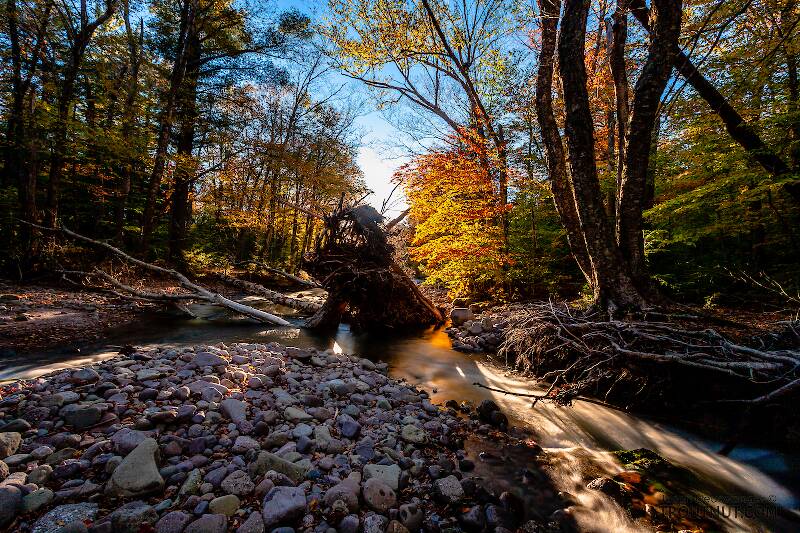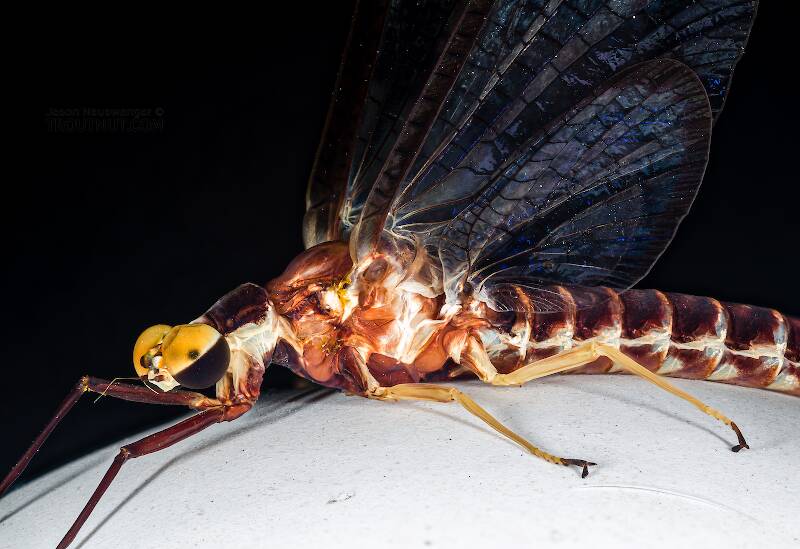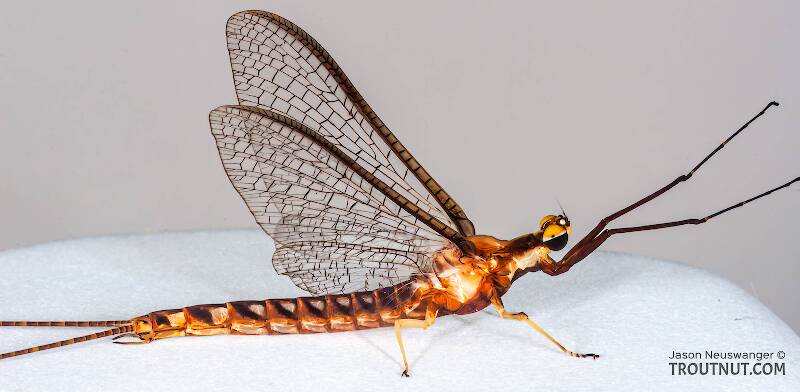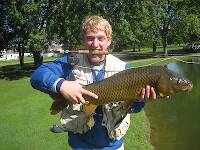
Blue-winged Olives
Baetis
Tiny Baetis mayflies are perhaps the most commonly encountered and imitated by anglers on all American trout streams due to their great abundance, widespread distribution, and trout-friendly emergence habits.
Featured on the forum

Troutnut is a project started in 2003 by salmonid ecologist Jason "Troutnut" Neuswanger to help anglers and
fly tyers unabashedly embrace the entomological side of the sport. Learn more about Troutnut or
support the project for an enhanced experience here.
This topic is about the Mayfly Species Hexagenia limbata
It starts like a rise of small trout. There are dimples on the surface--fingerling trout eating midges, perhaps. But these are no fish. The water breaks and out pop the yellow sails of a giant Hexagenia dun. Then another. And another. A vortex appears in a flash below the mayfly and it vanishes with a slurp so loud it echoes off the distant bank. A square tail like a shark fin breaks the surface behind the swirl as a brown trout twice the size of your net retreats back to his deeper lair. The Hex hatch is on.This Midwestern legend plays out every year on calm, dark, humid nights in early July. Anglers who only fly fish once a year drive hundreds of miles to play their part in the drama, while the mayflies themselves make the television news by showing up on doppler radar or calling snowplows out of dormancy to remove layers of Hexagenia (or "Hex") duns from the bridges. In the cold trout rivers of Wisconsin and Michigan, huge nocturnal brown trout whose usual menu consists of smaller brown trout become, for a week or so, prime dry fly quarry.
According to the literature, these are the second largest mayflies in the United States, behind the related Litobrancha recurvata flies. However, there are reports of limbata exceeding 40mm in some locales, which would make them the largest.
Example specimens
AftonAngler on Jun 10, 2006June 10th, 2006, 8:42 am EDT
Well the Hex is right on the cusp of happening...
I have heard rumors of some being spotted on the Nam...about right. I usually set me clock by the Solstice but this season is about ten days to two weeks ahead.
I expect them to show on the Brule anytime too. The next warming trend should usher in some of the big fellows and that will mean no sleep for a couple of weeks for this cat.
I need to sit down and get to tying. I had great success last year with a very 'soft' spinner pattern I dubbed Baby Doll Hex. It was floppy by hex spinner standards and best the pants off the stiff Lucca style patterns that look good int he fly bin but are not for me on the end of my leader when the rubber hits the road!
I also need to reread Galloup's "Cripples and Spinners" - a wealth of info on this aspect of the sport. Great for inspiring tying ideas...
Anyone confirm the reports?
I have heard rumors of some being spotted on the Nam...about right. I usually set me clock by the Solstice but this season is about ten days to two weeks ahead.
I expect them to show on the Brule anytime too. The next warming trend should usher in some of the big fellows and that will mean no sleep for a couple of weeks for this cat.
I need to sit down and get to tying. I had great success last year with a very 'soft' spinner pattern I dubbed Baby Doll Hex. It was floppy by hex spinner standards and best the pants off the stiff Lucca style patterns that look good int he fly bin but are not for me on the end of my leader when the rubber hits the road!
I also need to reread Galloup's "Cripples and Spinners" - a wealth of info on this aspect of the sport. Great for inspiring tying ideas...
Anyone confirm the reports?
See you on the Water.
Brad Bohen
The Afton Angler
www.BradBohen.com
AftonAngler@BradBohen.com
Brad Bohen
The Afton Angler
www.BradBohen.com
AftonAngler@BradBohen.com
Quick Reply
Related Discussions
Topic
Replies
Last Reply






